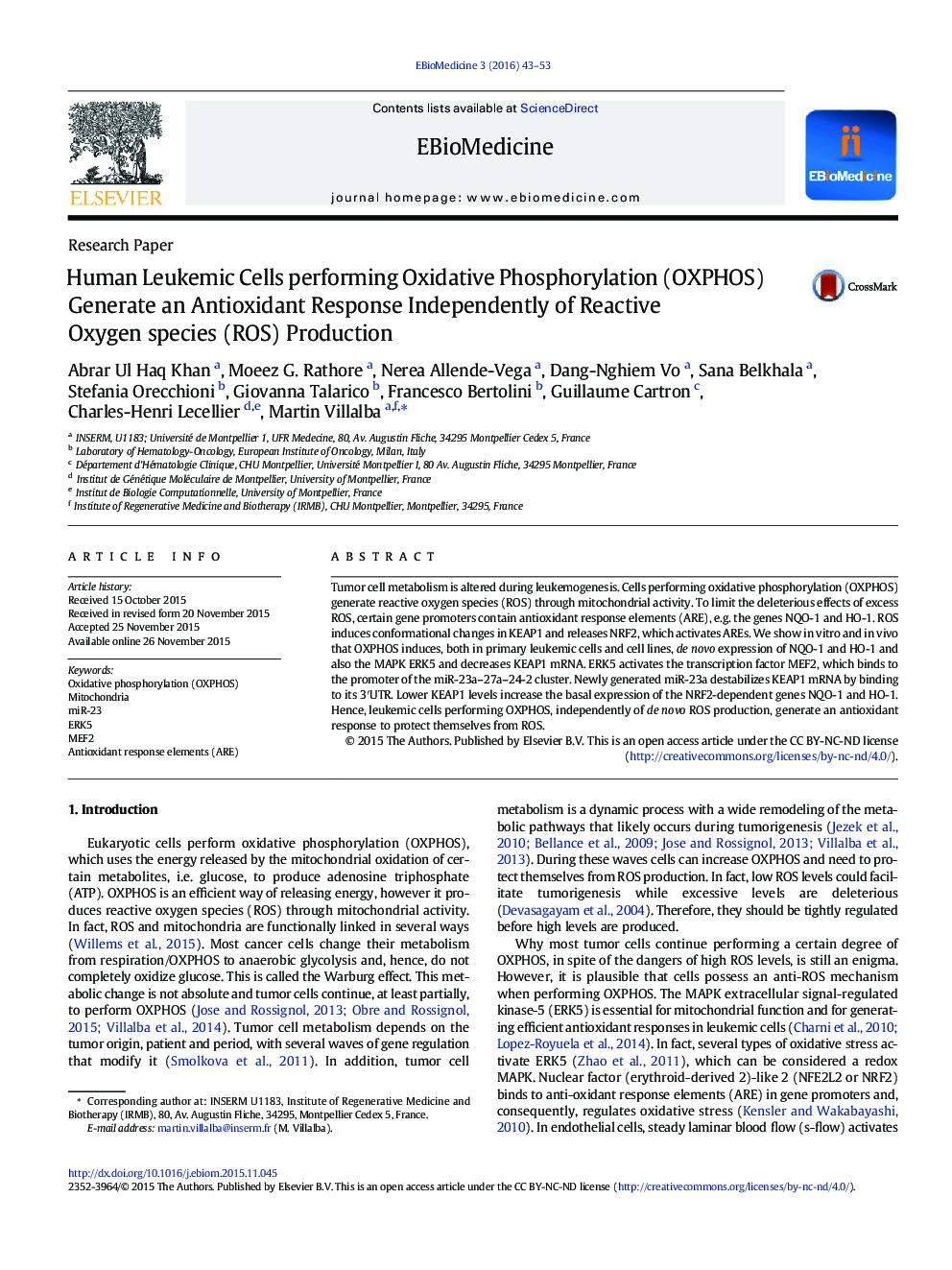| Article ID | Journal | Published Year | Pages | File Type |
|---|---|---|---|---|
| 2120865 | EBioMedicine | 2016 | 11 Pages |
•Leukemic cells performing OXPHOS increase ROS and antioxidant gene expression.•OXPHOS-mediated ERK5 activation induces miR-23 expression through MEF2.•miR-23 blocks KEAP1 expression and increases antioxidant genes.Cells performing oxidative phosphorylation (OXPHOS) generate reactive oxygen species (ROS) through mitochondrial activity. Excess ROS is deleterious to cells; hence they should be kept at bay. We show here that leukemic cells have a genetic program that allow them to generate an antioxidant response when performing OXPHOS and this is independent of ROS generation. Because leukemic cells need protection from ROS, this pathway is a potential target for therapeutic intervention.
Tumor cell metabolism is altered during leukemogenesis. Cells performing oxidative phosphorylation (OXPHOS) generate reactive oxygen species (ROS) through mitochondrial activity. To limit the deleterious effects of excess ROS, certain gene promoters contain antioxidant response elements (ARE), e.g. the genes NQO-1 and HO-1. ROS induces conformational changes in KEAP1 and releases NRF2, which activates AREs. We show in vitro and in vivo that OXPHOS induces, both in primary leukemic cells and cell lines, de novo expression of NQO-1 and HO-1 and also the MAPK ERK5 and decreases KEAP1 mRNA. ERK5 activates the transcription factor MEF2, which binds to the promoter of the miR-23a–27a–24-2 cluster. Newly generated miR-23a destabilizes KEAP1 mRNA by binding to its 3′UTR. Lower KEAP1 levels increase the basal expression of the NRF2-dependent genes NQO-1 and HO-1. Hence, leukemic cells performing OXPHOS, independently of de novo ROS production, generate an antioxidant response to protect themselves from ROS.
Graphical abstractFigure optionsDownload full-size imageDownload as PowerPoint slide
